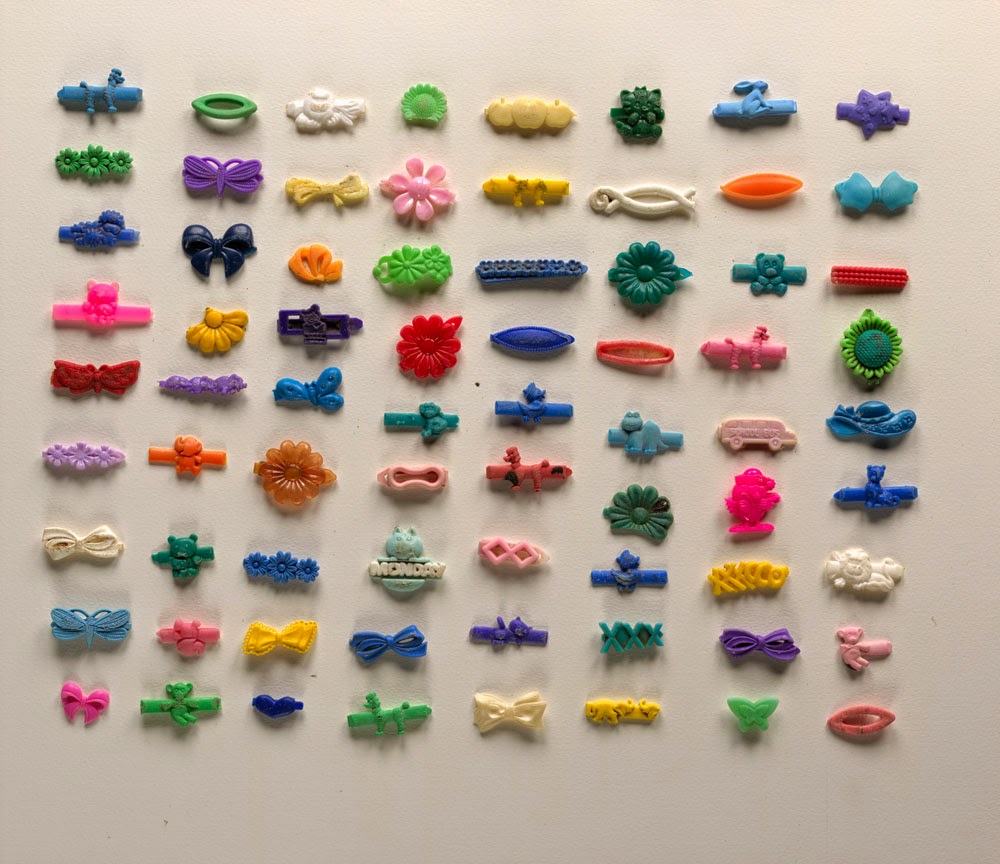We donned lab coats and goggles for our presentation Connect with a Scientist at the California Academy of Sciences. Emphasizing our collecting and categorizing methodology we invited museum go-ers to help us sort a bin full of Kehoe Beach plastic. Special thanks to our moderator Matthew Tucker who cajoled us and the audience with his lively banter.
Inspired by the groundbreaking work of Nat Bletter, Kurt Reynertson, and Julie Velásquez Runk. 2007. Plantae artificiae: The taxonomy, ecology, and ethnobotany of the Simulacraceae. Ethnobotany Research and Applications 5: 159-178. and the exhaustive and exhausting investigation by the dedicated Holotypic Occlupanid Research Group who have spent years classifying the plastic clips used to secure the closure of bagged bread and pastries, we decided to add a bit of performative fun to our talk.
We dazzled the crowd with photographs from our Known Quantity series. Like specimen drawers in a natural history museum our "drawers" catalogue some of our most common finds from the beach.
Before our demonstration, we visited the "Skulls" exhibit now on display at the Academy.
Over 400 sea lion skulls sweep across the wall, greeting visitors in a vivid exposition of "all the same —all different." Every sea lion skull is unique and every skull is from the same species, very much like the Tiparillo's we find and every piece of plastic as well.
We were fascinated by the time-lapse video of the dermestid beetle larvae that exhibit preparers use to clean the flesh from skulls. Oh, that there were a creature able to devour plastic—but then, imagine your car bumper infested, your stroller wheels, your pacemaker.












